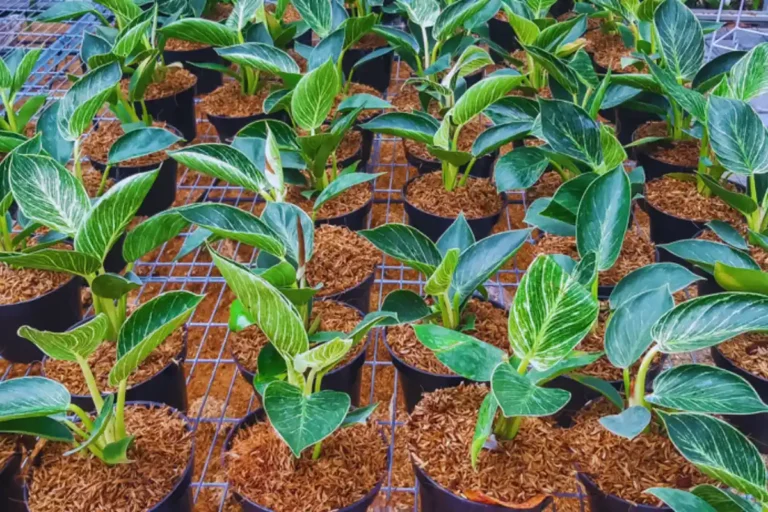How to grow and Care for Philodendron Birkin – Buying Tips
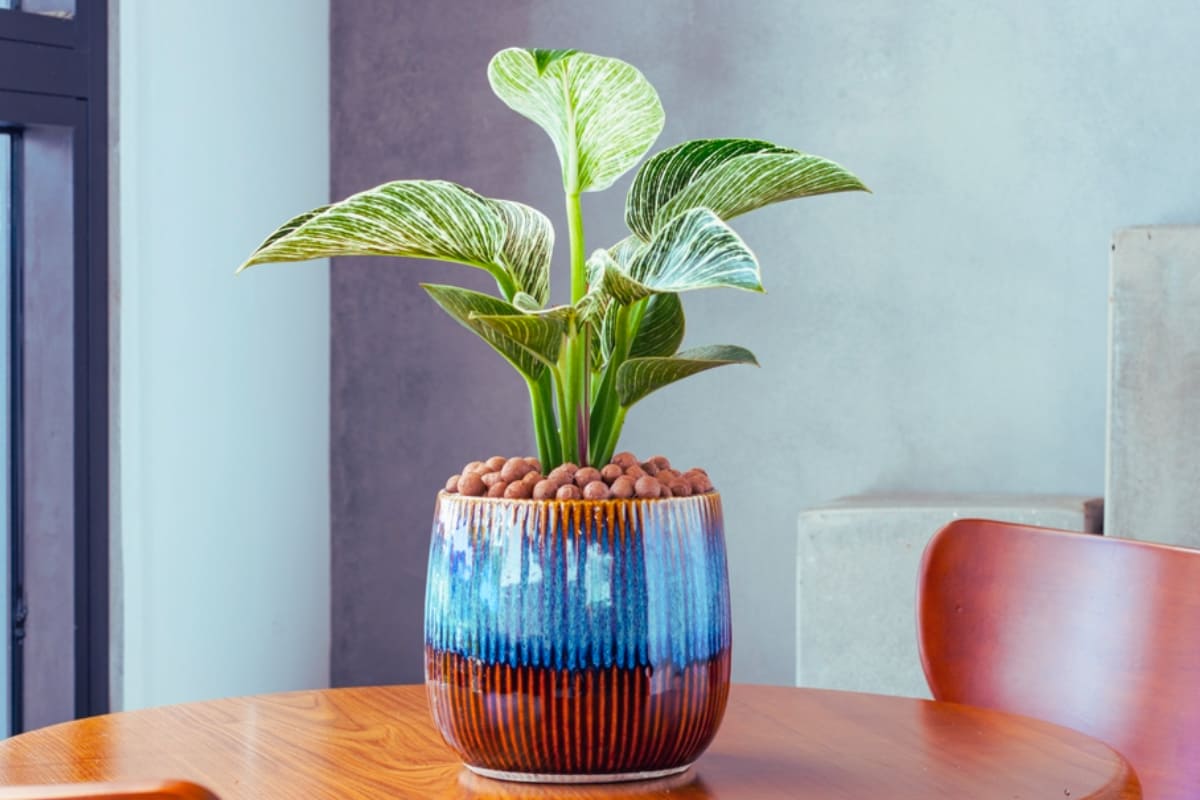
The Philodendron Birkin is a showstopper with its creamy white streaks and deep green leaves, making it a must-have for plant lovers. But let’s face it—keeping this beauty thriving can be tricky. From figuring out where to buy a healthy Birkin to worrying about why the variegation fades or proper care, many plant parents feel the struggle. The good news? This compact, slow-growing plant is surprisingly low-maintenance and perfect for small spaces. Whether you’re a beginner or a pro, this guide will help you buy, grow, and care for your Birkin plant with confidence. Let’s turn your care worries into wins!
birkin philodendron: Quick Care Overview
Aspect | Core Detail |
|---|---|
Common Name | Philodendron Birkin, White Wave Birkin |
Botanical Name | Philodendron ‘Birkin’ |
Family | Araceae |
Plant Type | Perennial |
Mature Size | 3 ft. tall, wide |
Sun Exposure | Bright, indirect |
Soil Type | Well-draining |
Soil pH | Acidic, neutral |
Hardiness Zones | 9–11 (USDA) |
Native Area | Central America |
Toxicity | Toxic to Pets & Humans |
Watering | Moderate |
Temperature | 65°F–85°F |
Humidity | 50%–60% |
Fertilizer | Balanced, weak |
Growth Rate | Slow |
Propagation | Stem cuttings |
Special Features | Variegated leaves |
Philodendron Birkin Care Guide
Hey there, plant lover! So, you’ve got your hands on a Philodendron Birkin—or maybe you’re about to. Either way, you’re probably thinking, “How do I keep this beauty alive and thriving?” Trust me, I’ve been there too. Let’s walk through everything you need to know to care for your Birkin, step by step, with a little real-life flair to make it stick. Because let’s face it—your Birkin isn’t just a plant; it’s a part of your home and your heart.
Light Requirements
Imagine your Birkin as that friend who loves sunny vacations but always sits under the umbrella. It craves bright, indirect light—think near an east- or west-facing window. Too much direct sun? Hello, sunburned leaves. Too little light? Say goodbye to those gorgeous white streaks. So, where’s your Birkin sitting right now? Is it soaking up the perfect amount of light, or is it hiding in a dark corner? Let’s fix that together!
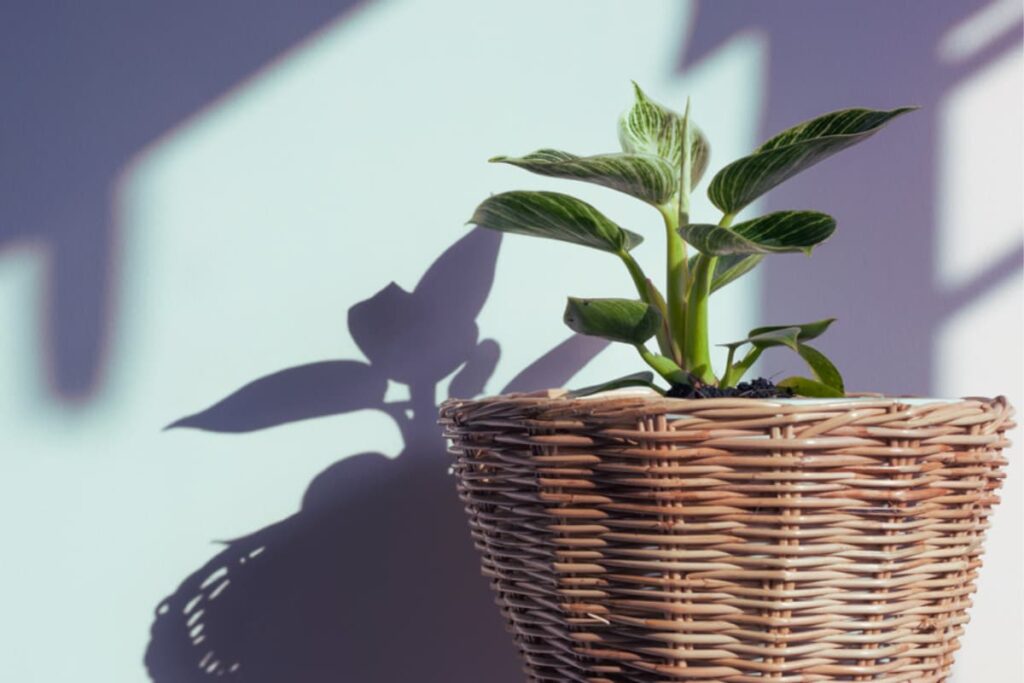
Pro Tip: Rotate your Birkin every few weeks to ensure even growth and prevent lopsidedness. It’s like a little workout for your plant, and it’ll reward you with lush, symmetrical foliage!
best Soil
Picture this: your Birkin’s roots are like tiny feet—they need comfy, breathable shoes to stay happy. A well-draining, aroid-specific soil mix is the way to go. Mix potting soil, orchid bark, and perlite for the perfect blend. If your Birkin’s sitting in heavy, soggy soil, it’s basically wearing rain boots in a desert. Not ideal, right? Time to upgrade its “footwear” and give it the home it deserves.
Watering Schedule
Here’s a question: are you the type to over-love your plants with too much water? Guilty? Don’t worry, we’ve all been there. Your Birkin prefers a “less is more” approach. Water only when the top 1-2 inches of soil are dry. Stick your finger in the soil—if it feels damp, hold off on the watering can. Overwatering can lead to root rot, and trust me, that’s a headache you don’t want.
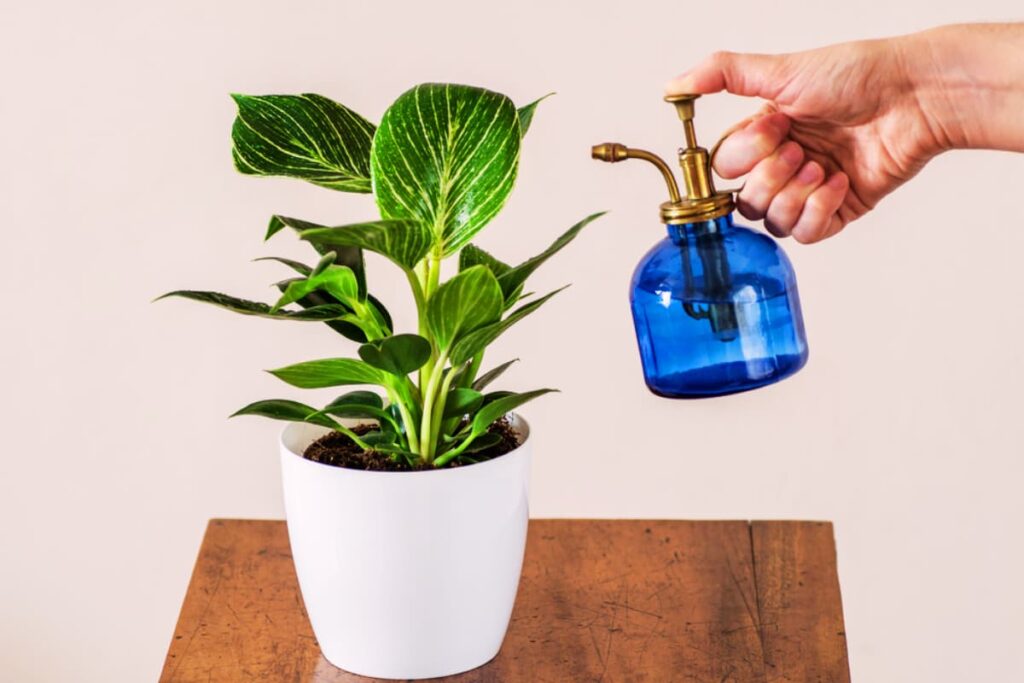
Temperature and Humidity
Think of your Birkin as a tropical vacationer—it loves warmth and humidity. Keep it in a cozy spot with temperatures between 65°F and 85°F. If your home feels like a desert, your birkin indoor plant might start throwing a fit (hello, brown tips!). Try a humidifier or a pebble tray to keep it happy. Is your Birkin near a drafty window or a heater? Time to move it to a better spot and give it the tropical vibes it craves.
Fertilization
Let’s be real: Plants need food, but they don’t need a Buffet. Feed your Birkin houseplant with a balanced, diluted fertilizer every 2 months during spring and summer. Over-fertilizing can cause leaf burn, and nobody wants crispy leaves. If you’re unsure about how much to feed, check out our blog on Philodendron Birkin care tips. Your Birkin will thank you with lush, glossy leaves!
Propagation
Want to grow your Birkin family? Propagation is easier than you think! Take a 4- to 5-inch stem cutting with at least two nodes, remove the lower leaves, and place it in water or soil. In a few weeks, you’ll see roots forming. Once the roots are about an inch long, transfer the cutting to soil. For a detailed step-by-step guide, visit our blog on how to propagate Philodendron Birkin.
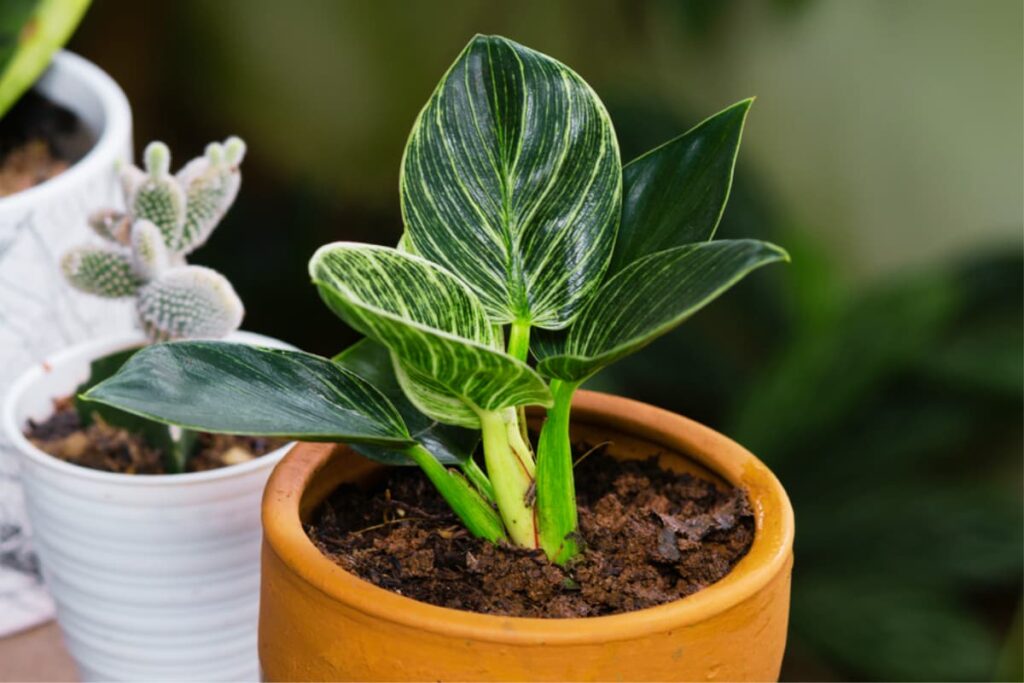
Pruning
Ever had a bad haircut? Your birkin plant feels the same way about dead or yellow leaves. Use clean scissors to trim away any damaged foliage. This not only keeps your plant looking fresh but also directs energy to new growth. So, grab those scissors and give your Birkin a little “spa day”—it deserves it!
Repotting
Think of repotting as moving your philodendron birkin variegated to a bigger apartment. When roots start poking out of the drainage holes, it’s time to upgrade to a slightly larger pot. Use fresh, well-draining soil, and don’t go too big—your Birkin likes to feel snug. Repotting every 1-2 years keeps your plant happy and healthy. Ready to give your Birkin a fresh start?
Avoiding Pest
Nobody likes uninvited guests, especially not your philodendron white birkin. Keep an eye out for pests like spider mites or mealybugs. If you spot any, treat them with neem oil or insecticidal soap. Regular leaf inspections and cleaning can prevent infestations. Your Birkin will thank you for keeping it safe and sound!
leaves Cleaning
Dusty leaves? That’s like trying to breathe through a mask. Wipe your Birkin’s leaves with a damp cloth every few weeks to keep them clean and shiny. This helps the plant absorb more light and stay healthy. Plus, it’s a great way to bond with your green buddy. Who doesn’t love a little plant pampering? If you’re noticing other leaf issues like yellowing, browning, or curling, check out our detailed guide on Philodendron Birkin’s Leaf Problems and Solutions for expert tips and fixes.

Avoiding Toxicity
While the Philodendron Birkin is stunning, it’s important to note that it’s toxic to pets and humans. Its can appear symptoms like drooling and irritation when nibbled by cats and dogs. Keep it out of reach of curious hands and paws. For more safety tips, read our blog on is Philodendron Birkin toxic to pets and humans?.
Buying Guide for healthy birkin Philodendron
So, you’ve fallen in love with the stunning Philodendron Birkin houseplant and are ready to bring one home? Great choice! But before you hit that “buy” button or grab the first plant you see, let’s talk about how to choose the perfect Birkin from a perfect seller. After all, a healthy plant is a happy plant—and a happy plant means less stress for you! Here’s your expert guide to buying a Philodendron Birkin like a pro.
Where to Buy Philodendron Birkin:
Looking for the perfect Philodendron Birkin Plant? You’ve got options! Check out local nurseries for a hands-on experience, or explore online plant stores for a wider selection. We’ve done the legwork for you and found some of the best sellers to make your search easier to buy philodendron birkin. Ready to bring home your new Birkin? Let’s get started!
what to look in white wave birkin
Healthy Leaves:
Strong Roots:
Pest-Free:
New Growth:
Variegation:
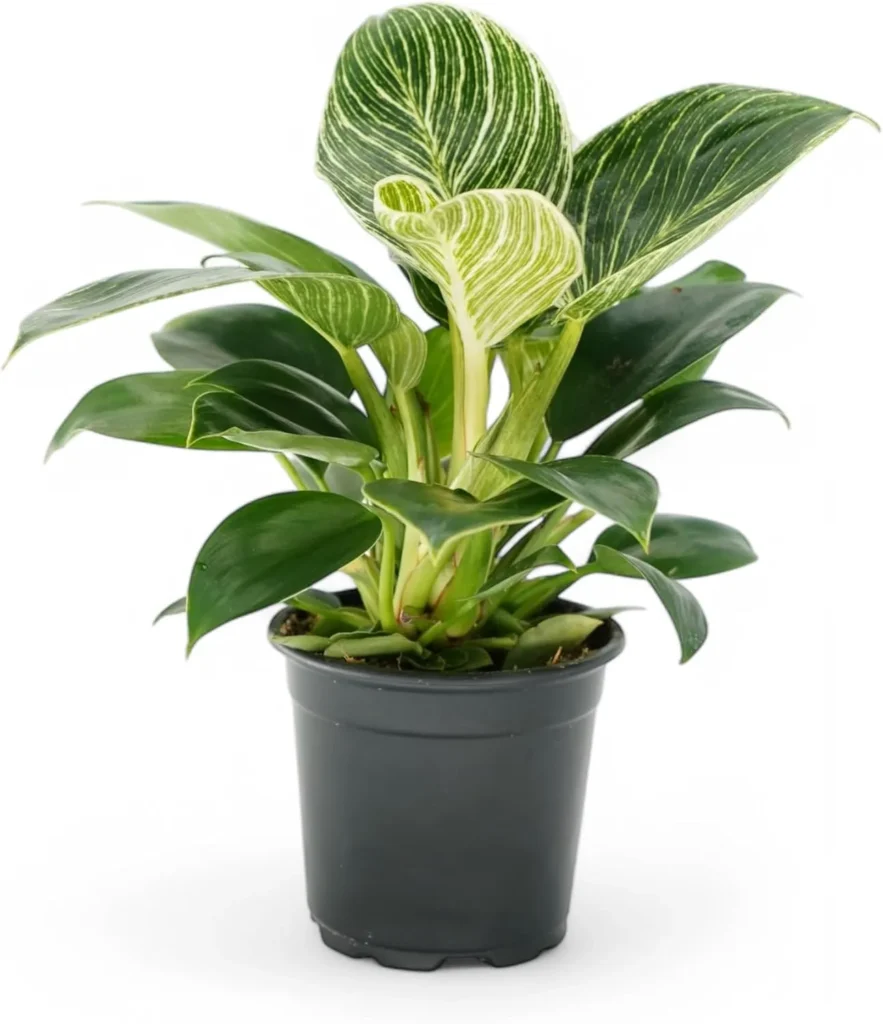
birkin philodendron Live HousePlant for Home Decor & Air Purifying
Final Thoughts
Caring for your Philodendron Birkin doesn’t have to be overwhelming. With the right light, soil, water, and a little TLC, your Birkin will thrive and reward you with its stunning variegation. Whether you’re a beginner or a seasoned plant parent, this guide has everything you need to keep your Birkin happy and healthy. We’ve worked hard to provide clear, actionable tips to address all your questions and concerns. Trust us—your Birkin is in good hands! Ready to see your plant flourish? Let’s make it happen together!



